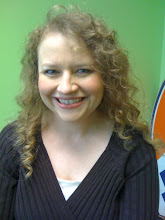That was four manuscripts ago, and while I know I have much to learn, I have picked up a few tips along the journey. Sometime last year I stumbled upon a great tutorial via Iain Broome over at the Write for Your Life website. He explained how using the Document Map feature in Word can help you organize your book. It was a revelation for this very basic Word user.
I can't afford fancy writing software at the moment, so I pretty much do everything in Word. Learning to use the Document Map feature has kept me from endlessly scrolling through acres of pages, trying to find out where a certain clue or character was introduced.
I find it also works well for my daily job. I've been able to organize 20 pages of a transcribed interview into a coherent white paper and wrestle a tangle of testimonials into a navigable document. I only wish I knew about it when I was writing my master's thesis. That would have saved me from several panicked moments. If you're a newbie like me trying to figure out how to organize your manuscript, I highly recommend heading over to Write for Your Life and checking out the video.
Do you use any special editing software? Have you learned any other tricks in Word that would help a writer out?




Thanks Lisa! I'm in the same boat. I will definitely have to check this out.
ReplyDeleteI hope you find it helpful! It definitely has been a lifesaver for me. At least, it's kept me from a puddle of tears quite a few times. :)
ReplyDeleteI can recommend yWriter. It's nothing fancy but solid writer's software made by a writer a programmer. And it's free!
ReplyDeletehttp://www.spacejock.com/yWriter.html
Birgit
Birgit-I actually just learned about yWriter today at KM Weiland's blog. Thanks for the recommendation; I was interested in checking it out. Currently, most of my outline is handwritten with a million post-its. I knew there had to be a better way! :)
ReplyDeleteI use Scriviner (for the Mac), but I also undertook a great editing course (How To Revise Your Novel) online. Had me write out every scene onto index cards and then reading through the manuscript look at the intention of each scene, the character's present, giving weight to the varying importance of character, objects, settings and more. It saved me, then by the time I did the edits I only had to go through the MS one time.
ReplyDeleteCharmaine-That's an interesting way to do it. I'm constantly trying to figure out the best way to revise my novel because that's the point that I get really stuck in. Thanks for the suggestion.
ReplyDeleteHi Lisa - oh yah, baby - I use the document map. And I've become an expert in squinching it over ever so slightly so it takes up the least space possible. My only complaint is that I can't cut and copy the info in it as it is a meme not text so sometimes I just go through and make a chapter list by hand - kind of. My favorite current tool for revising is doing up (by hand) beat sheets - each scene described with any changes you might need or symbols of the pace or mood etc... I have them all on one plywood board and I can tell how far I've gotten so that I'm looking at the book from the floor and the balcony if you get me.
ReplyDeleteJan Morrison
Jan- Beat sheets definitely sound like an interesting tool that would come in handy. I also scrunch the DM over the side. I'm considering putting in the timing during the chapter as a sub-head so I don't lose track of it all. Thanks for your comment!
ReplyDelete